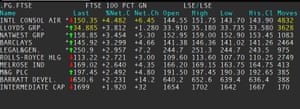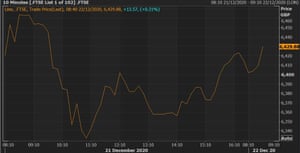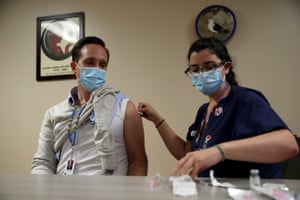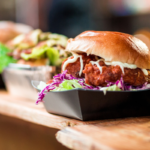
While investors are hopeful that Covid border restrictions will blow over, some companies are unwilling to take any chances.
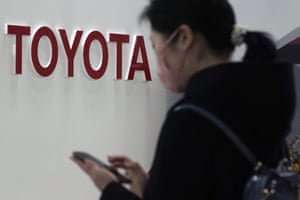
Toyota will stop production at its British and French plants earlier than scheduled due to Covid border closures. Photograph: Eugene Hoshiko/AP
Toyota will stop production at its British and French plants earlier than scheduled before Christmas because of the chaos caused by Covid-19 border closures, Joanna Partridge writes.
The Japanese carmaker said it was expecting shortages of parts as a result of transport delays, after France’s 48-hour ban on accompanied freight or cargo from Britain led to queues of lorries miles long stuck near Dover.
Toyota said it had decided to bring forward the “planned seasonal stop” at its engine plant in Deeside in north Wales and its factory at Burnaston in Derbyshire, where it makes the Corolla. About 3,000 people are employed at the two plants.
The Deeside site will close for Christmas on Tuesday and the Burnaston plant on Wednesday. Its French site will also stop production two days earlier than planned.
The European factories would ordinarily have closed for an annual shutdown on Christmas Eve and remained shut until 4 January.
The car manufacturer said it had taken the decision “in light of the traffic bans that a growing number of countries have issued for travel from the UK and due to the uncertain nature of how long the borders will be closed for logistics activities.”
UK government borrowing soars to 50-year high
The UK government’s efforts to get the economy moving during the summer months, with moves including the eat out to help out subsidy in restaurants and cafes, had a greater effect than first thought.
However the public finances appear to have taken a bigger hit as a result, with the government’s borrowing soaring to a 50-year high.
The latest figures for the public finances in November showed the public sector net borrowing hit £31.6bn, £26bn more than in November 2019, which the ONS said is both the highest November borrowing and the third-highest borrowing in any month since monthly records began in 1993.
Measures introduced by the government to cut VAT for hospitality firms and forgive business rates payments played a large role in the £3.8bn drop in tax receipts.
The level of borrowing in the current financial year climbed to £241bn, up £188.6bn on the same period last year, pushing the annual deficit to 11.2% of GDP and the figure for general government gross debt to 102.8% of GDP at the end of November.
Chancellor of the Exchequer, Rishi Sunak, said:
As part of our Plan for Jobs we’ve invested £280bn to protect millions of jobs and businesses across the UK.
This is the right thing to do to protect lives and livelihoods during this acute phase of the crisis. When our economy recovers, it’s right that we take the necessary steps to put the public finances on a more sustainable footing so we are able to respond to future crises in the way we have done this year.
UK GDP revised up to 16% for Q3
Britain’s economy staged a faster recovery in the third quarter of the year than was first estimated, following a rapid return to work after the first lockdown, Phillip Inman writes.
The Office for National Statistics said national income, or GDP, increased by a record 16% in the three months to the end of September rather than the 15.5% in its first estimate. This leaves the economy 8.6% smaller than the year before, rather than the 9.7% estimated initially.
A stronger increase in government spending, a boost to the demand for goods and services from a surge in employees returning to work and a small increase in business investment contributed to the improved picture of the economy, the ONS said.
In a move that indicates the panic households suffered following the first lockdown continued to ease in the third quarter, the ONS said the savings ratio – which shows how much people save as a proportion of their income – decreased to 16.9% after reaching a record 27.4% in the second quarter.
Ruth Gregory, the UK economist at the consultancy Capital Economics said the still high level of savings meant there was more scope for households to boost spending in the coming months.
At least the drop in the saving rate left it far above its long-run average of 8.0%. That implies there is plenty of scope for household spending, and GDP, to rebound strongly once the restrictions are lifted.


